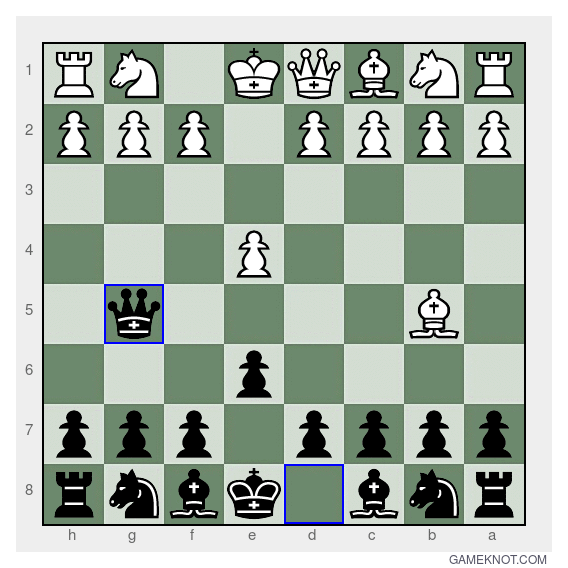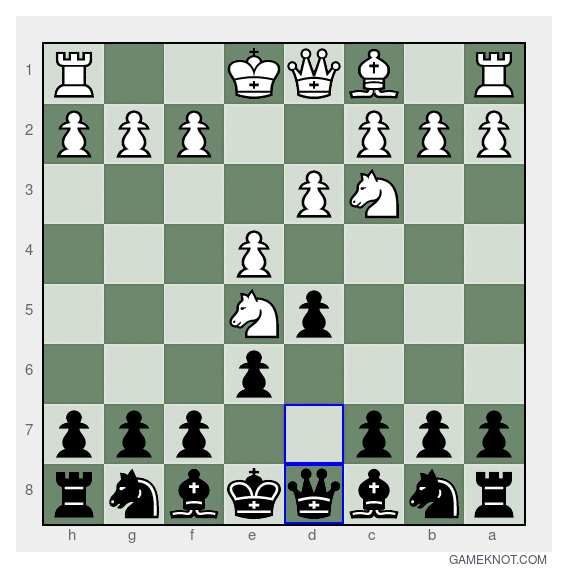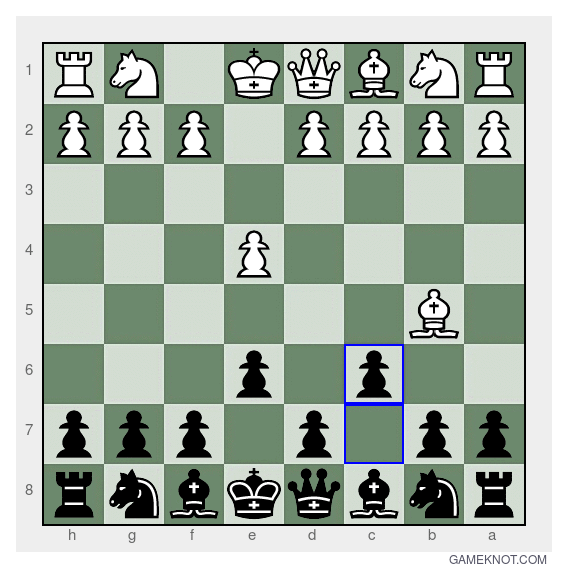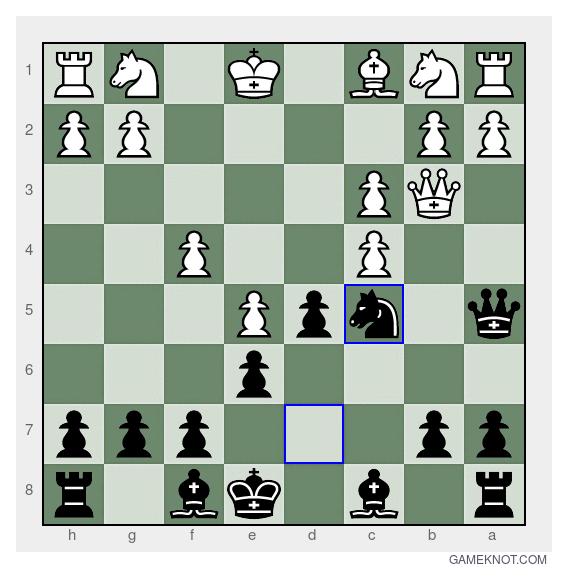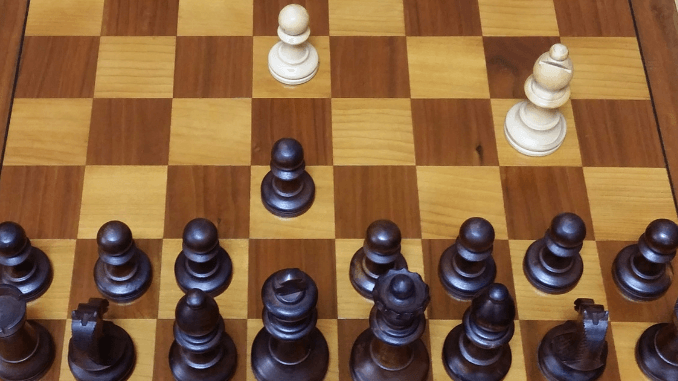
The #PubChessBluffer was in full-on pub chess mode last night at a bar called Southern Cross , which is in the middle of Hiroshima, Japan.
The Bird Invitation
In one of the games I played with the black pieces, the opening moves were: 1.e4 e6 2. Bb5, which prevents the French Defence player’s ideal move of 2. …d5 as the d pawn is pinned to the King by the Bishop of b5.
This is known as the Bird Invitation after it was used as an innovation by Henry Edward Bird in a game against Maximilian Fleissig, which Bird won, in 1873.
In last night’s game, my opponent’s aim with this opening, which he referred to as the “Spanish Gambit” (which I had never heard of, and can find no information about it online), was to sacrifice his Bishop and create a disordered set up for Black which White can then exploit.

Three Responses to the Bird Invitation
In the video I go through three possible responses, the first based on my own second move, the second based on John Watson’s recommendation in the 4th edition of Play The French , and the third based on the LiChess engine’s response.
How I Responded to the Bird Invitation
| 1. | e4 | e6 |
| 2. | Bb5 | Qg5 |
| 3. | Nf3 | Qxb5 |
| 4. | d3 | d5 |
| 5. | Nc3 | Qd7 |
| 6. | Ne5 | Qd8 |
When my opponent opened with 1.e4 I immediately responded with 1. …e6 to enter the French Defence. When he countered with Bb5 I was a bit surprised and frustrated! After a bit of thought I decided to bring out my Queen to attack both the unprotected pawn on g2 and the b5 Bishop.
When my opponent failed to protect or move his Bishop I assumed it was a rookie blunder and took the Bishop with my Queen. However, that was just what he wanted and he began to put pressure on my Queen until she returned to her home square.
In the end, the capture of the Bishop did give me an edge throughout most of the game, but my opponent’s superior development caused me to get my pieces in a tangle in the middle game. However, I managed to stay the course and went on to win the game. In short, offering a Bishop gambit in this way is not really to be recommended.
John Watson’s Suggestion
| 1. | e4 | e6 |
| 2. | Nb5 | c6 |
| 3. | Ba4 | d5 |
| 4. | Qe2 | Qa5 |
| 5. | Bb3 | Nf6 |
| 6. | e5 | Nfd7 |
| 7. | c3 | c5 |
| 8. | d3 | Nc6 |
| 9. | f4 | Nd4 |
| 10. | Qd1 | Nxb3 |
| 11. | Qxb3 | c4 |
| 12. | dxc4 | Nc5 |
In the fourth edition of Play the French John Watson cites a game played in Berlin in 1988 in which Black’s second move was 2. … c6 and the line that follows leads to an advantage for Black.
How LiChess Responds to the Bird Invitation
| 1. | e4 | e6 |
| 2. | Bb5 | a6 |
| 3. | Be2 | d5 |
| 4. | exd5 | exd5 |
| 5. | d4 | Nf6 |
| 6. | Nf3 | Bd6 |
| 7. | O-O | O-O |
| 8. | c4 | dxc4 |
| 9. | Bxc4 | b5 |
| 10 | Bd3 | Nc6 |
| 11. | Bg5 | Bg4 |
| 12. | Bxh7+ | Kxh7 |
| 13. | Qc2+ | Kg8 |
| 14. | Qxc6 | Qe8 |
Whereas John Watson offers c6 as a good response to 2. Bb5, the LiChess engine recommends 2. … a6.

Conclusion: Keep it Easy! Respond to 2. Bb5 with c6 or a6
So, in conclusion, if you are playing the French Defence against 1. e4 and are hit with 2. Nb5, the Bird Invitation, don’t panic! Simply move either your a pawn or your c pawn forward one square to challenge the Bishop.
